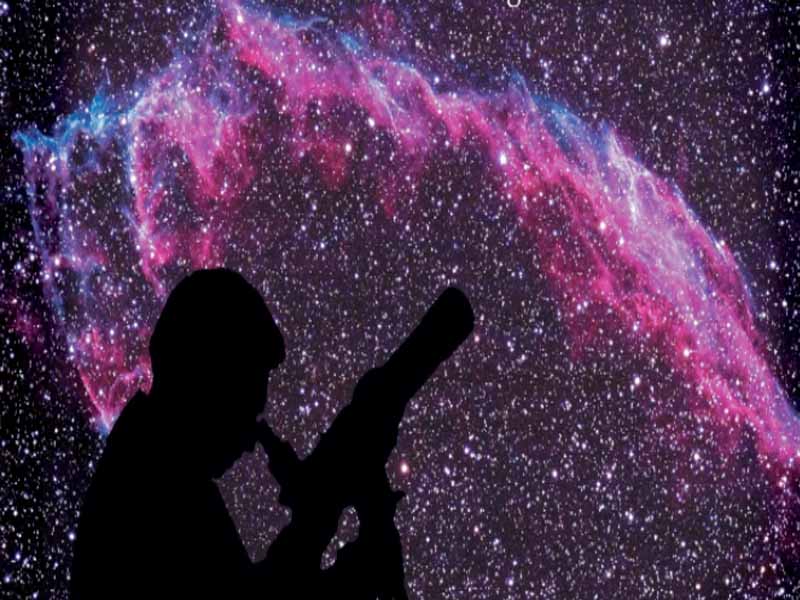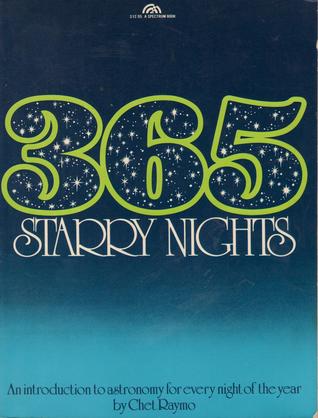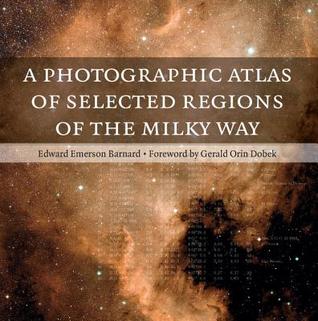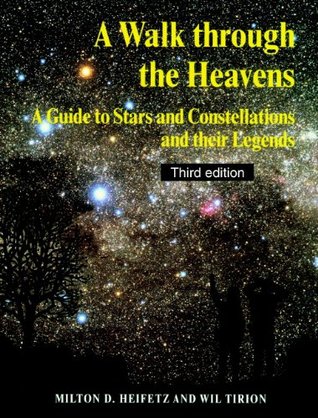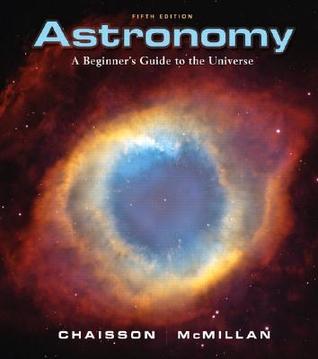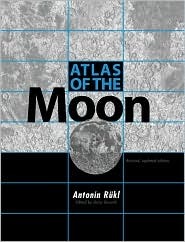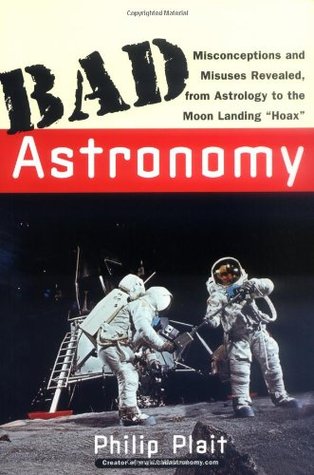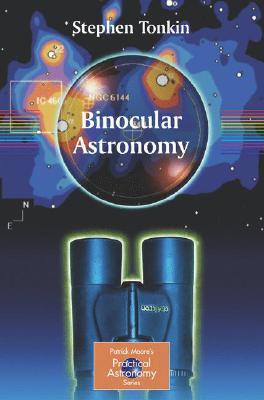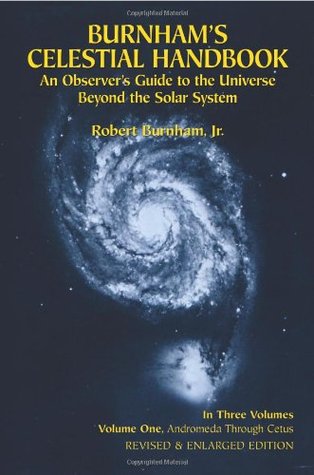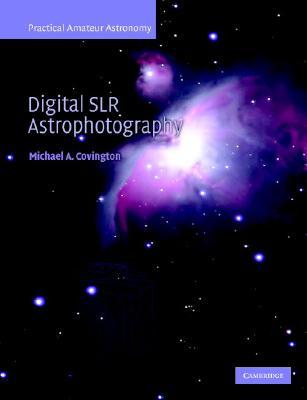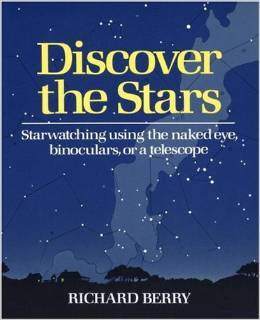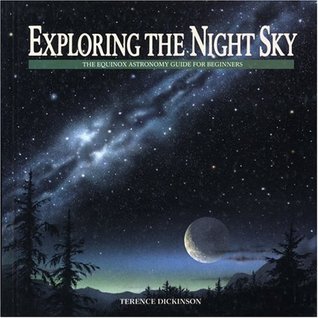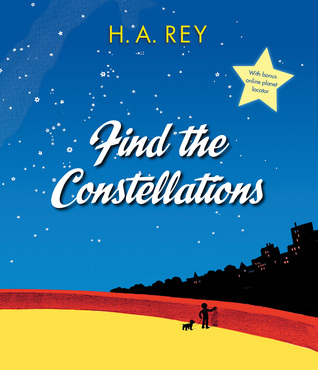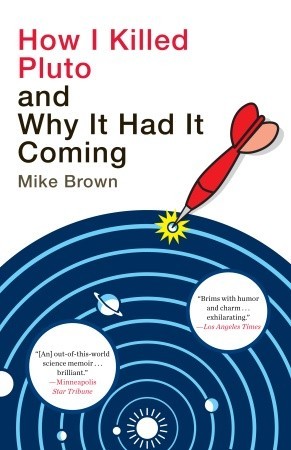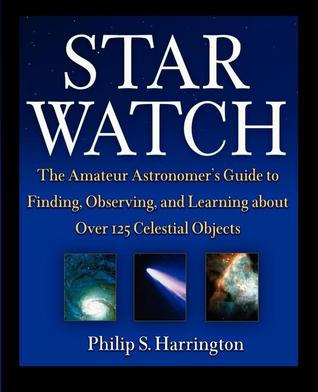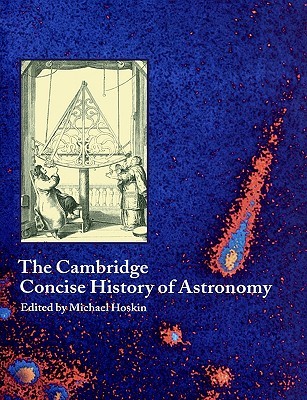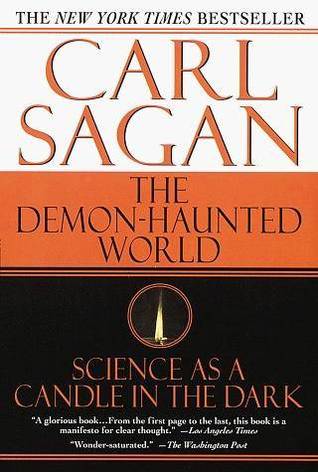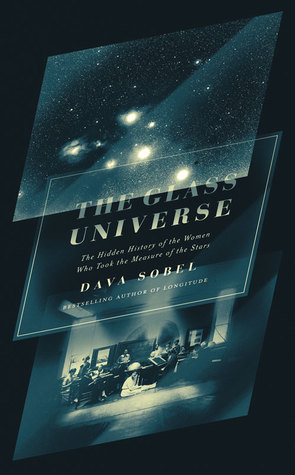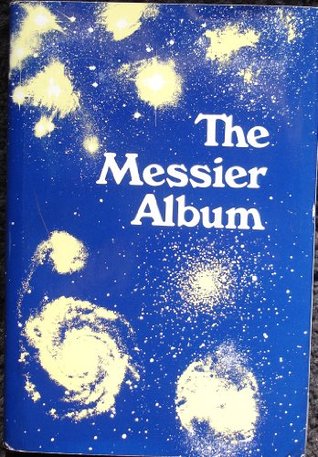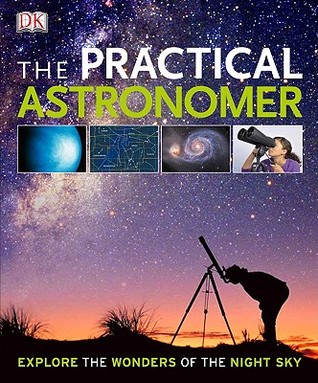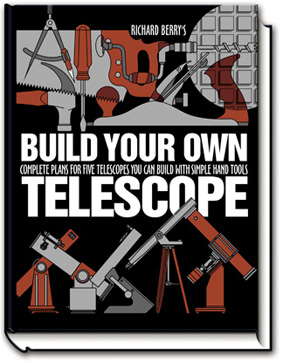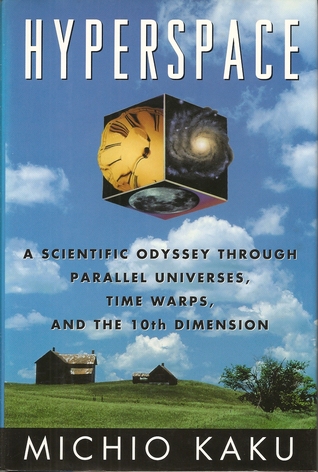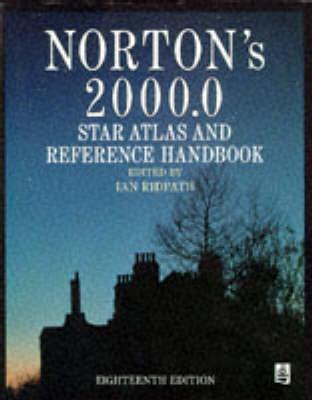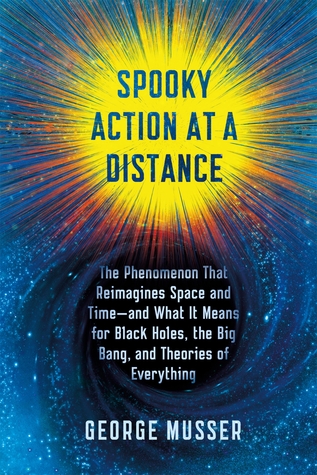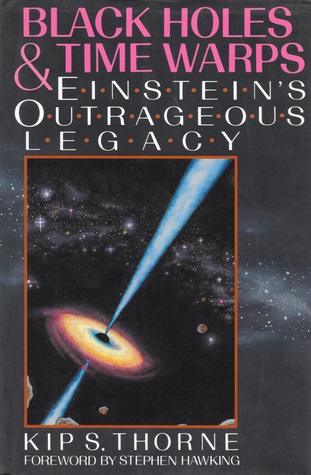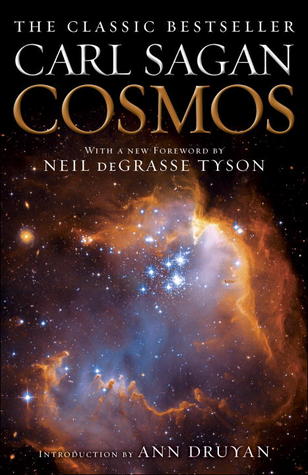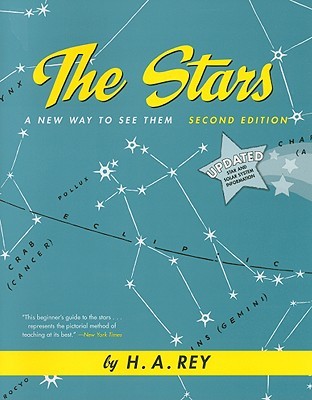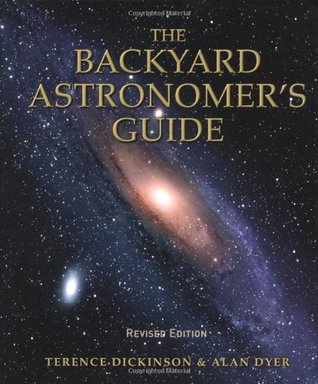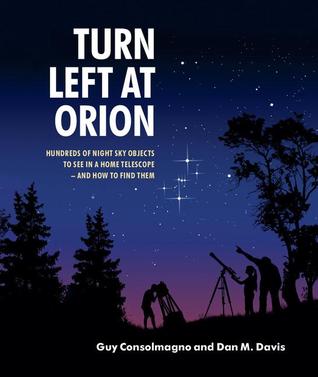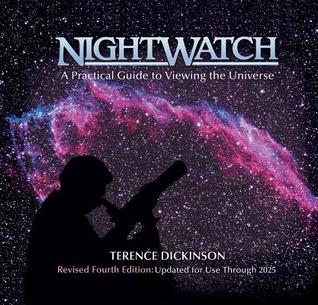The Best Astronomy Books For Any Age
“What are the best books about Astronomy?” We looked at 234 of the top Astronomy books, aggregating and ranking them so we could answer that very question!
You would think that just getting a fancy telescope and pointing it up would be enough to look up and appreciate the wide open solar system all around us (honestly it actually is), but if you really want to learn about what you are seeing and form a deeper understanding of the stars and constellations you are seeing then a good Astronomy book is what you will need. We gathered together over 230 different books together from a variety of different Astronomy book lists that have been created over the years, aggregating and ranking them as we went. The top 35 books, all appearing on 2 or more lists, are below with images, descriptions, and links. The remaining 199 books, as well as the lists we used, are in alphabetical order at the bottom of the page.
Happy Scrolling!
Top 35 Astronomy Books
35 .) 365 Starry Nights An Introduction to Astronomy for Every Night of the Year by Chet Raymo
Lists It Appears On:
- Mohawk Valley Astronomical Society
- Sky Maps
“365 Starry Nights is a unique and fascinating introduction to astronomy designed to give you a complete, clear picture of the sky every night of the year. Divided into 365 concise, illustrated essays, it focuses on the aesthetic as well as the scientific aspects of stargazing. It offers the most up-to-date information available, with hundreds of charts, drawings, and maps-that take you beyond the visible canopy of stars and constellations into the unseen realm of nebulae and galaxies.
This simple yet substantial text is full of critical information and helpful hints on how to observe the stars; describe their position; calculate their age, brightness, and distance; and much more. Whether you observe the sky with a telescope or the naked eye, 365 Starry Nights makes the infinite intimate and brings the heavens within your grasp. Keep this invaluable, informative guide close at hand, and you’ll find that the sky is the limit 365 nights a year.”
34 .) A Photographic Atlas of Selected Regions of the Milky Way by Edward Emerson Barnard
Lists It Appears On:
- Cambridge University Press
- Astronomy Trek
Edward Emerson Barnard’s Photographic Atlas of Selected Regions of the Milky Way was originally published in two volumes in 1927. Together these volumes contained a wealth of information, including photographic plates of the most interesting portions of the Milky Way, descriptive text, charts, and data. Only 700 copies were printed, making the original edition a collector’s item. Reproduced in print for the first time, this edition combines both volumes of Barnard’s Atlas. It directly replicates Barnard’s text, and contains high resolution images of the original photographic plates and charts, reordered so that they can be seen together. It also includes a biography of Barnard and his work, a Foreword and Addendum by Gerald Orin Dobek describing the importance of the Atlas and additions to this volume, and a pull-out section with a mosaic of all 50 plates combined in a single panorama.
33 .) A Walk through the Heavens by Milton D. Heifetz
Lists It Appears On:
- Cambridge University Press
- Astronomy Trek
A Walk through the Heavens is a beautiful and easy-to-use guide to the constellations of the northern hemisphere. By following the unique simplified maps, readers will be able to easily find and identify the constellations and the stars within them. Ancient myths and legends of the sky are retold, adding to the mystery of the stars. Written for the complete beginner, this practical guide introduces the patterns of the starry skies in a memorable way. No equipment is needed, apart from normal sight and clear skies. Milton D. Heifetz is a clinical professor of neurosurgery at the University of Southern California and visiting professor at Harvard Medical School.
32 .) Astronomy: A Beginner’s Guide to the Universe by Eric Chaisson and Steve McMillan
Lists It Appears On:
- Space Info
- Omni
With the Eighth Edition of Astronomy: A Beginner’s Guide , trusted authors Eric Chaisson and Steve McMillan bring a renewed freshness and analysis to recent changes in our understanding of the cosmos. As with the other two books in their Astronomy suite (one for two-semester courses and the other, a brief visual book), the authors continue to emphasize three major themes: the process of science, the size and scale of the universe, and the evolution of the cosmos. This new edition ignites reader interest with new discoveries from the latest space missions and a new focus on reader-oriented engagement.
31 .) Atlas of the Moon by Antonon Rukl
Lists It Appears On:
- Ejamison
- Mohawk Valley Astronomical Society
A best-seller that traces the history of the Moon, its surface, its origin and evolution, and its exploration. Includes a detailed map of 76 sections of the Moon’s surface observable by telescope.
30 .) Bad Astronomy by Philip C. Plait
Lists It Appears On:
- One Minute Astronomer
- Space Info
29 .) Bang!: The Complete History of the Universe by Brian May, Patrick Moore, and Chris Lintott
Lists It Appears On:
- Five Books
- Space Info
With one big bang, the universe exploded into being 13.7 million years ago. This is the story of how everything came about, from the moment when time and space came into existence, to the formation of the first stars, galaxies, and planets, to the evolution of human beings able to contemplate our own origins and ultimate destiny—and on to the infinite future, after the Red Giant Sun consumes Earth. Bang! explains it all in clear, straightforward terms, chronologically, without any mathematics, and including the most up-to-date discoveries.
28 .) Binocular Astronomy by Stephen Tonkin
Lists It Appears On:
- Mohawk Valley Astronomical Society
- About
This book describes the many advantages of using binoculars for astronomy. It explains how to choose and evaluate binoculars as well as covers the functionality and physiology of binocular observation and their varying optical characteristics.
27 .) Burnham’s Celestial Handbook – An Observers Guide to the Heavens by Robert Burnham, Jr
Lists It Appears On:
- Ejamison
- Mohawk Valley Astronomical Society
“While there are many books on stars, there is only one Celestial Handbook. Now completely revised through 1977, this unique and necessary reference is available once again to guide amateur and advanced astronomers in their knowledge and enjoyment of the stars.
Volume I of this comprehensive three-part guide to the thousands of celestial objects outside our solar system ranges from Andromeda through Cetus. Objects are grouped according to constellation, and their definitions feature names, coordinates, classifications, and physical descriptions. After an extensive introduction in Volume I, which gives the beginner enough information to follow about 80 percent of the body of the material, the author gives comprehensive coverage to the thousands of celestial objects outside our solar system that are within the range of telescopes in the two- to twelve-inch range.
The objects are grouped according to the constellations in which they appear. Each constellation is divided into four subject sections: list of double and multiple stars; list of variable stars; list of star clusters, nebulae and galaxies; and descriptive notes. For each object the author gives names, celestial coordinates, classification, and full physical description. These, together with a star atlas, will help you find and identify almost every object of interest.”
26 .) Deep-Sky Wonders by Walter Scott Houston
Lists It Appears On:
- Ejamison
- University Lowbrow Astronomers
Highlights from Sky & Telescope’s Deep-Sky Wonders column display the independence of thought and devotion to craft that made writer “Scotty” Houston a favorite among readers for almost 50 years. Sky & Telescope magazine contributing editor Stephen James O’Meara has selected and arranged the best of Scotty’s work into a year-round guide to the star clusters, nebulae, and galaxies that lure skygazers into their backyards on clear, dark nights. Scotty intersperses his engaging commentary with expert advice on becoming a more capable observer.
25 .) Digital SLR Astrophotography by Michael A. Covington
Lists It Appears On:
- Cambridge University Press
- Astronomy Trek
In the last few years, digital SLR cameras have taken the astrophotography world by storm. It is now easier to photograph the stars than ever before! They are compact and portable, flexible to adapt with different lenses and for telescope use, and above all DSLR cameras are easy and enjoyable to use. In this concise guide, experienced astrophotography expert Michael Covington outlines the simple, enduring basics that will enable you to get started, and help you get the most from your equipment. He covers a wide selection of equipment, simple and advanced projects, technical considerations and image processing techniques. Unlike other astrophotography books, this one focuses specifically on DSLR cameras, not astronomical CCDs, non-DSLR digital cameras, or film. This guide is ideal for astrophotographers who wish to develop their skills using DSLR cameras and as a friendly introduction to amateur astronomers or photographers curious about photographing the night sky.
24 .) Discover the Stars by Richard Berry
Lists It Appears On:
- Telescope
- Omni
“For everyone who has looked up at the stars on a clear night and longed to know more about them, here is the perfect introduction and guide to discovering the stars.
Discover the Stars leads you on a tour of all the stars and constellations visible with the naked eye and introduces you to deep-sky objects that can be seen with binoculars or a simple telescope. The tour is conducted by the editor of Astronomy magazine, Richard Berry, whose two-color, computer-plotted sky maps and clear instructions make stargazing fun and productive from your first night out.
The heart of Discover the Stars is two sections of big, beautiful sky maps and charts. The first section features twelve maps that show the entire sky overhead as it appears during each month of the year. These outline all the constellations visible anywhere in the Northern Hemisphere, and the accompanying text reveals the rich ancient mythology that surrounds the star groups.”
23 .) Exploring the Night Sky: The Equinox Astronomy Guide for Beginners by Terence Dickinson
Lists It Appears On:
- Omni
- Mohawk Valley Astronomical Society
Exploring the Night Sky is aimed at novice star gazers anxious to expand their astronomical repertoire beyond the Big and Little Dippers. Dickinson has designed a superb introduction to astronomy that is clear, concise, beautifully illustrated, and very “user friendly” no matter what the child’s age.
22 .) Find the Constellations by H.A. Rey
Lists It Appears On:
- About
- Telescope
“Containing star charts, a guide to the constellations, and details about seasons and the movement of the objects we see in the sky, this classic book makes H. A. Rey’s passion for astronomy evident on every page.
New updates concentrate on the planetary and solar system information in the latter part of the book. Facts and figures for each planet have been revised, and new scientific information has been added, such as Pluto’s reclassification as a dwarf planet. There’s also a brand-new online resource that allows readers to track the positions of the planets in the night sky till the year 2100!”
21 .) How I Killed Pluto and Why It Had It Coming by Mike Brown
Lists It Appears On:
- Audiobooks
- Super Power Optics
“The solar system most of us grew up with included nine planets, with Mercury closest to the sun and Pluto at the outer edge. Then, in 2005, astronomer Mike Brown made the discovery of a lifetime: a tenth planet, Eris, slightly bigger than Pluto. But instead of adding one more planet to our solar system, Brown’s find ignited a firestorm of controversy that culminated in the demotion of Pluto from real planet to the newly coined category of “dwarf” planet. Suddenly Brown was receiving hate mail from schoolchildren and being bombarded by TV reporters—all because of the discovery he had spent years searching for and a lifetime dreaming about.
A heartfelt and personal journey filled with both humor and drama, How I Killed Pluto and Why It Had It Coming is the book for anyone, young or old, who has ever imagined exploring the universe—and who among us hasn’t?”
20 .) Star Watch: The Amateur Astronomer’s Guide by Philip S. Harrington
Lists It Appears On:
- Mohawk Valley Astronomical Society
- Space Info
“Your Passport to the Universe
The night sky is alive with many wonders–distant planets, vast star clusters, glowing nebulae, and expansive galaxies, all waiting to be explored. Let respected astronomy writer Philip Harrington introduce you to the universe in Star Watch, a complete beginner’s guide to locating, observing, and understanding these celestial objects. You’ll start by identifying the surface features of the Moon, the banded cloud tops of Jupiter, the stunning rings of Saturn, and other members of our solar system. Then you’ll venture out beyond our solar system, where you’ll learn tips and tricks for finding outstanding deep-sky objects from stars to galaxies, including the entire Messier catalog–a primary goal of every serious beginner.”
19 .) The Big Dipper (Let’s-Read-and-Find-Out Science 1) by Franklyn M. Branley
Lists It Appears On:
- Growing With Science
- Mohawk Valley Astronomical Society
“Are the stars out tonight?
If they are, chances are you’ll be able to spot the Big Dipper. The Big Dipper is one of the easiest constellations to recognize and this Let’s-Read-and-Find-Out Science book will help young stargazers find it, and it’s companion, the Little Dipper. And once you’ve begun to learn about the constellations, well, the sky’s the limit!”
18 .) The Cambridge Concise History of Astronomy by Michael Hoskin
Lists It Appears On:
- Cambridge University Press
- Astronomy Trek
Astronomy is one of the oldest sciences, and one which has repeatedly led to fundamental changes in our view of the world. This book covers the history of our study of the cosmos from prehistory to a survey of modern astronomy and astrophysics. It does not attempt to cover everything, but deliberately concentrates on the important themes and topics, including stellar astronomy in the seventeenth and eighteenth centuries–the source of many important concepts in modern astronomy–and the Copernican revolution, which led to the challenge of ancient authorities in many areas other than astronomy. This is an essential text for students of the history of science and for students of astronomy who require a historical background to their studies.
17 .) The Demon-Haunted World: Science as a Candle in the Dark by Carl Sagan and Ann Druyan
Lists It Appears On:
- Astronomy Trek
- Space
“How can we make intelligent decisions about our increasingly technology-driven lives if we don’t understand the difference between the myths of pseudoscience and the testable hypotheses of science? Pulitzer Prize-winning author and distinguished astronomer Carl Sagan argues that scientific thinking is critical not only to the pursuit of truth but to the very well-being of our democratic institutions.
Casting a wide net through history and culture, Sagan examines and authoritatively debunks such celebrated fallacies of the past as witchcraft, faith healing, demons, and UFOs. And yet, disturbingly, in today’s so-called information age, pseudoscience is burgeoning with stories of alien abduction, channeling past lives, and communal hallucinations commanding growing attention and respect. As Sagan demonstrates with lucid eloquence, the siren song of unreason is not just a cultural wrong turn but a dangerous plunge into darkness that threatens our most basic freedoms.”
16 .) The Glass Universe’ by Dava Sobel
Lists It Appears On:
- Audiobooks
- Space
“In the mid-nineteenth century, the Harvard College Observatory began employing women as calculators, or “human computers,” to interpret the observations their male counterparts made via telescope each night. At the outset this group included the wives, sisters, and daughters of the resident astronomers, but soon the female corps included graduates of the new women’s colleges—Vassar, Wellesley, and Smith. As photography transformed the practice of astronomy, the ladies turned from computation to studying the stars captured nightly on glass photographic plates.
The “glass universe” of half a million plates that Harvard amassed over the ensuing decades—through the generous support of Mrs. Anna Palmer Draper, the widow of a pioneer in stellar photography—enabled the women to make extraordinary discoveries that attracted worldwide acclaim. They helped discern what stars were made of, divided the stars into meaningful categories for further research, and found a way to measure distances across space by starlight. Their ranks included Williamina Fleming, a Scottish woman originally hired as a maid who went on to identify ten novae and more than three hundred variable stars; Annie Jump Cannon, who designed a stellar classification system that was adopted by astronomers the world over and is still in use; and Dr. Cecilia Helena Payne, who in 1956 became the first ever woman professor of astronomy at Harvard—and Harvard’s first female department chair. “
15 .) The Light Hearted Astronomer by Ken Fulton
Lists It Appears On:
- Ejamison
- Jim Doty
14 .) The Messier Album – An Observers Handbook by John Mallas & Evered Kreimer
Lists It Appears On:
- Mohawk Valley Astronomical Society
- Ejamison
Details Charles Messier’s observations of the heavens (begun in 1758), supplemented by modern photography.
13 .) The Practical Astronomer by Anton Vamplew & Will Gater
Lists It Appears On:
- Sky Night Magazine
- Stargazing in the UK
Understand and enjoy the solar system and beyond with this practical guide to astronomy. Start off by taking a tour around the night sky in simple stages, discovering how it fits together and how it works. Then take a closer look at the objects you can see and learn to recognize basic patterns of constellations.
12 .) A Brief History of Time, From the Big Bang to Black Holes by Stephen Hawkings
Lists It Appears On:
- Super Power Optics
- University Lowbrow Astronomers
- Audiobooks
“A landmark volume in science writing by one of the great minds of our time, Stephen Hawking’s book explores such profound questions as: How did the universe begin—and what made its start possible? Does time always flow forward? Is the universe unending—or are there boundaries? Are there other dimensions in space? What will happen when it all ends?
Told in language we all can understand, A Brief History of Time plunges into the exotic realms of black holes and quarks, of antimatter and “arrows of time,” of the big bang and a bigger God—where the possibilities are wondrous and unexpected. With exciting images and profound imagination, Stephen Hawking brings us closer to the ultimate secrets at the very heart of creation.”
11 .) Build Your Own Telescope – Complete Plans for Five Telescopes You Can Build with Simple Hand Tools by Richard Berry
Lists It Appears On:
- Mohawk Valley Astronomical Society
- Ejamison
- About
10 .) Hyperspace: A Scientific Odyssey Through Parallel Universes, Time Warps, and the Tenth Dimension by Michio Kaku
Lists It Appears On:
- Astronomy Trek
- Physics Astronomy
- Space
“Are there other dimensions beyond our own? Is time travel possible? Can we change the past? Are there gateways to parallel universes? All of us have pondered such questions, but there was a time when scientists dismissed these notions as outlandish speculations. Not any more. Today, they are the focus of the most intense scientific activity in recent memory. In Hyperspace, Michio Kaku, author of the widely acclaimed Beyond Einstein and a leading theoretical physicist, offers the first book-length tour of the most exciting (and perhaps most bizarre) work in modern physics, work which includes research on the tenth dimension, time warps, black holes, and multiple universes.
The theory of hyperspace (or higher dimensional space)–and its newest wrinkle, superstring theory–stand at the center of this revolution, with adherents in every major research laboratory in the world, including several Nobel laureates. Beginning where Hawking’s Brief History of Time left off, Kaku paints a vivid portrayal of the breakthroughs now rocking the physics establishment. Why all the excitement? As the author points out, for over half a century, scientists have puzzled over why the basic forces of the cosmos–gravity, electromagnetism, and the strong and weak nuclear forces–require markedly different mathematical descriptions. But if we see these forces as vibrations in a higher dimensional space, their field equations suddenly fit together like pieces in a jigsaw puzzle, perfectly snug, in an elegant, astonishingly simple form. This may thus be our leading candidate for the Theory of Everything. If so, it would be the crowning achievement of 2,000 years of scientific investigation into matter and its forces. Already, the theory has inspired several thousand research papers, and has been the focus of over 200 international conferences.
Michio Kaku is one of the leading pioneers in superstring theory and has been at the forefront of this revolution in modern physics. With Hyperspace, he has produced a book for general readers which conveys the vitality of the field and the excitement as scientists grapple with the meaning of space and time. It is an exhilarating look at physics today and an eye-opening glimpse into the ultimate nature of the universe.”
9 .) Norton’s Star Atlas and Reference Handbook by Ian Ridpath
Lists It Appears On:
- Space Info
- Stargazing in the UK
- Five Books
star atlas and reference handbook
8 .) Spooky Action at a Distance by George Musser
Lists It Appears On:
- Astronomy Trek
- Physics Astronomy
- Space
“What is space? It isn’t a question that most of us normally ask. Space is the venue of physics; it’s where things exist, where they move and take shape. Yet over the past few decades, physicists have discovered a phenomenon that operates outside the confines of space and time: nonlocality-the ability of two particles to act in harmony no matter how far apart they may be. It appears to be almost magical. Einstein grappled with this oddity and couldn’t come to terms with it, describing it as “”spooky action at a distance.”” More recently, the mystery has deepened as other forms of nonlocality have been uncovered. This strange occurrence, which has direct connections to black holes, particle collisions, and even the workings of gravity, holds the potential to undermine our most basic understandings of physical reality. If space isn’t what we thought it was, then what is it?
In Spooky Action at a Distance, George Musser sets out to answer that question, offering a provocative exploration of nonlocality and a celebration of the scientists who are trying to explain it. Musser guides us on an epic journey into the lives of experimental physicists observing particles acting in tandem, astronomers finding galaxies that look statistically identical, and cosmologists hoping to unravel the paradoxes surrounding the big bang. He traces the often contentious debates over nonlocality through major discoveries and disruptions of the twentieth century and shows how scientists faced with the same undisputed experimental evidence develop wildly different explanations for that evidence. Their conclusions challenge our understanding of not only space and time but also the origins of the universe-and they suggest a new grand unified theory of physics. Delightfully readable, Spooky Action at a Distance is a mind-bending voyage to the frontiers of modern physics that will change the way we think about reality.”
7 .) Black Holes and Time Warps: Einstein’s Outrageous Legacy by Kip Thorne
Lists It Appears On:
- University Lowbrow Astronomers
- Physics Astronomy
- Space
- Astronomy Trek
“Which of these bizarre phenomena, if any, can really exist in our universe? Black holes, down which anything can fall but from which nothing can return; wormholes, short spacewarps connecting regions of the cosmos; singularities, where space and time are so violently warped that time ceases to exist and space becomes a kind of foam; gravitational waves, which carry symphonic accounts of collisions of black holes billions of years ago; and time machines, for traveling backward and forward in time.
Kip Thorne, along with fellow theorists Stephen Hawking and Roger Penrose, a cadre of Russians, and earlier scientists such as Oppenheimer, Wheeler and Chandrasekhar, has been in the thick of the quest to secure answers. In this masterfully written and brilliantly informed work of scientific history and explanation, Dr. Thorne, the Feynman Professor of Theoretical Physics at Caltech, leads his readers through an elegant, always human, tapestry of interlocking themes, coming finally to a uniquely informed answer to the great question: what principles control our universe and why do physicists think they know the things they think they know? Stephen Hawking’s A Brief History of Time has been one of the greatest best-sellers in publishing history. Anyone who struggled with that book will find here a more slowly paced but equally mind-stretching experience, with the added fascination of a rich historical and human component.”
6 .) Cosmos by Carl Sagan
Lists It Appears On:
- Astronomy Trek
- Physics Astronomy
- Super Power Optics
- Space
Cosmos is one of the bestselling science books of all time. In clear-eyed prose, Sagan reveals a jewel-like blue world inhabited by a life form that is just beginning to discover its own identity and to venture into the vast ocean of space. Featuring a new Introduction by Sagan’s collaborator, Ann Druyan, full color illustrations, and a new Foreword by astrophysicist Neil deGrasse Tyson, Cosmos retraces the fourteen billion years of cosmic evolution that have transformed matter into consciousness, exploring such topics as the origin of life, the human brain, Egyptian hieroglyphics, spacecraft missions, the death of the Sun, the evolution of galaxies, and the forces and individuals who helped to shape modern science.
5 .) The Stars: A New Way to See Them by H.A. Rey
Lists It Appears On:
- Sky Maps
- About
- Act For Libraries
- Mohawk Valley Astronomical Society
- Telescope
This is a clear, vivid text with charts and maps showing the positions of the constellations the year round.
4 .) Astronomy: A Self-Teaching Guide by Dinah L. Moché
Lists It Appears On:
- Sky Night Magazine
- Sky Maps
- About
- Omni
- Mohawk Valley Astronomical Society
- Space Info
For a generation, Astronomy: A Self-Teaching Guide has introduced hundreds of thousands of readers worldwide to the night sky. Now this classic beginner’s guide has been completely revised to bring it up to date with the latest discoveries. Updated with the latest, most accurate information, new online resources, and more than 100 new graphics and photos
3 .) The Backyard Astronomer’s Guide by Terence Dickinson and Alan Dyer
Lists It Appears On:
- Ejamison
- Omni
- Sky Maps
- Space Info
- Stargazing in the UK
- Telescope
The newest edition of The Backyard Astronomer’s Guide includes the latest data and answers the questions most often asked by home astronomers, from beginners to experienced stargazers. Terence Dickinson and Alan Dyer provide expert guidance on the right types of telescopes and other equipment; photographing the stars through a telescope; and star charts, software and other references. They cover daytime and twilight observing, planetary and deep-sky observing, and much more.
2 .) Turn Left at Orion Hundreds of Night Sky Objects to See in a Home Telescope and How to Find Them by Guy Consolmagno and Dan M. Davis
Lists It Appears On:
- Cambridge University Press
- Mohawk Valley Astronomical Society
- Omni
- One Minute Astronomer
- Sky Maps
- Stargazing in the UK
- Telescope
With over 100,000 copies sold since first publication, this is one of the most popular astronomy books of all time. It is a unique guidebook to the night sky, providing all the information you need to observe a whole host of celestial objects. With a new spiral binding, this edition is even easier to use outdoors at the telescope and is the ideal beginner’s book. Keeping its distinct one-object-per-spread format, this edition is also designed for Dobsonian telescopes, as well as for smaller reflectors and refractors, and covers Southern hemisphere objects in more detail. Large-format eyepiece views, positioned side-by-side, show objects exactly as they are seen through a telescope, and with improved directions, updated tables of astronomical information and an expanded night-by-night Moon section, it has never been easier to explore the night sky on your own.
1 .) NightWatch: A Practical Guide to Viewing the Universe by Terence Dickinson
Lists It Appears On:
- About
- Ejamison
- Jim Doty
- Mohawk Valley Astronomical Society
- Omni
- One Minute Astronomer
- Sky Maps
- Space
- Space Info
- Telescope
The first three editions of NightWatch sold more than 600,000 copies, making it the top-selling stargazing guide in the world for the last 20 years. The key feature of this classic title is the section of star charts that are cherished by backyard astronomers everywhere. Each new edition has outsold the previous one because of thorough revisions and additional new material.
The Additional Best Astronomy Books
| # | Book | Author | Lists |
| (Books Appear On 1 List Each) | |||
| 36 | 13 Planets: The Latest View of the Solar System | David A. Aguilar | Growing With Science |
| 37 | 21st Century Astronomy (Full Second Edition) | Jeff Hester | Space Info |
| 38 | 50 Things to see with a small telescope | John A Read | My First Telescope |
| 39 | A Black Hole Is Not a Hole | Carolyn Cinami DeCristofano | Growing With Science |
| 40 | A Child’s Introduction to the Night Sky | Michael Driscoll, illustrated | Telescope |
| 41 | A Man on the Moon | Andrew Chaikin | Audiobooks |
| 42 | A More Perfect Heaven | Dava Sobel | One Minute Astronomer |
| 43 | A Question & Answer Guide To Astronomy | Pierre-Yves Bely, Carol Christian and Jean-René Roy | Sky Night Magazine |
| 44 | A Short History of Nearly Everything | Bill Bryson | Super Power Optics |
| 45 | A Student’s Guide to the Mathematics of Astronomy | Daniel Fleisch, Julia Kregenow | Astronomy Trek |
| 46 | All About Telescopes | Sam Brown | Mohawk Valley Astronomical Society |
| 47 | An Amateur’s Guide to Observing and Imaging the Heavens | Ian Morison | Astronomy Trek |
| 48 | An Introduction to the Solar System | David A. Rothery | Cambridge University Press |
| 49 | An Introduction to the Theory of Stellar Structure and Evolution | Dina Prialnik | Cambridge University Press |
| 50 | Astronomical Applications of Astrometry: Ten Years of Exploitation of the Hipparcos Satellite Data | Michael Perryman | Astronomy Trek |
| 51 | Astronomical Calendar | Guy Ottwell | Mohawk Valley Astronomical Society |
| 52 | Astronomical Tables of the Sun, Moon and Planets Second Edition, | Jean Meeus | Ejamison |
| 53 | Astronomy | Jayden Samson | Omni |
| 54 | Astronomy (DK Eyewitness Books) | Kristen Lippincott | Space Info |
| 55 | Astronomy for Beginners | Jeff Becan | Omni |
| 56 | Astronomy For Dummies | Stephen P. Maran | Space Info |
| 57 | Astronomy Magazine | Kalmbach Publishing | Mohawk Valley Astronomical Society |
| 58 | Astronomy Today Vol 1: The Solar System (6t… | Eric Chaisson | Space Info |
| 59 | Astronomy Today Vol 2: Stars and Galaxies (… | Eric Chaisson | Space Info |
| 60 | Astronomy: A Physical Perspective | Marc L. Kutner | Cambridge University Press |
| 61 | Astrophotography – An Introduction | H. J. P. Arnold | Mohawk Valley Astronomical Society |
| 62 | Astrophotography for the Amateur | Michael Covington, or Digital SLR Astrophotography, also | Jim Doty |
| 63 | Astrophysics for Physicists | Arnab Rai Choudhuri | Cambridge University Press |
| 64 | Before the Big Bang: The Prehistory of Our … | Brian Clegg | Space Info |
| 65 | Beginner’s Guide to Amateur Astronomy | David J. Eicher | Mohawk Valley Astronomical Society |
| 66 | Beyond the Blue Horizon: Myths and Legends of the Sun, Moon, Stars, and Planets | E. C. Krupp | Mohawk Valley Astronomical Society |
| 67 | Big Bang: The Origin of the Universe | Simon Singh | Space Info |
| 68 | Big Bang: The Story of the Universe | Heather Crouper & Nigel Henbest | Mohawk Valley Astronomical Society |
| 69 | Binocular Highlights, | Gary Seronik | About |
| 70 | Binocular Stargazing, | Mike D. Reynolds and David Levy | About |
| 71 | Black Holes | Heather Crouper & Nigel Henbest | Mohawk Valley Astronomical Society |
| 72 | Black Holes in the Universe | Mitchell Begelman | Cambridge University Press |
| 73 | Book of Hints, Tips & Everyday Wisdom | Rodale | Mohawk Valley Astronomical Society |
| 74 | Bright Star Atlas 2000.0 | Wil Tirion | Mohawk Valley Astronomical Society |
| 75 | Brother Astronomer, Adventures of a Vatican Scientist | Brother Guy Consolmagno | University Lowbrow Astronomers |
| 76 | Cars on Mars: Roving the Red Planet | Alexandra Siy | Growing With Science |
| 77 | Celestial Sampler | Sue French | Ejamison |
| 78 | Child’s introduction to the night sky | Michael driscoll & Meredith hamilton | My First Telescope |
| 79 | City Astronomy | Robin Scagell | Mohawk Valley Astronomical Society |
| 80 | Comets (Heinemann First Library: the Night Sky and Other Amazing Sights in Space) | Nick Hunter | Growing With Science |
| 81 | Coming of Age in the Milky Way | Timothy Ferris | One Minute Astronomer |
| 82 | Constellations of the Northern Skies National Audubon Society Pocket Guides | Gary Mechler, Mark R. Chartrand and Wil Tirion | Sky Maps |
| 83 | Cosmic Catastrophes: Exploding Stars, Black Holes, and Mapping the Universe (2nd Edition) | J. Craig Wheeler | Astronomy Trek |
| 84 | Curiosities of the Sky | Garrett P. Serviss | Audiobooks |
| 85 | Death By Black Hole | Neil deGrasse Tyson | Super Power Optics |
| 86 | Deep-Sky Companions: The Messier Objects | Stephen James O’Meara | Ejamison |
| 87 | Discover: Astronomy (Usborne Discovery) | Rachel Firth | Telescope |
| 88 | Earthrise: My Adventures as an Apollo 14 Astronaut | Edgar Mitchell | Growing With Science |
| 89 | Easy Lessons in Einstein | Edwin E. Slosson | Audiobooks |
| 90 | Easy Things to See with a Small Telescope: | Richard J. Bartlett | Omni |
| 91 | Eclipses (Heinemann First Library: The Night Sky: And Other Amazing Sights in Space) | Nick Hunter | Growing With Science |
| 92 | Edmund Mag. 6 Star Atlas | Dickinson, Costanzo, and Chaple | Mohawk Valley Astronomical Society |
| 93 | Exploring the Moon Through Binoculars and Small Telescopes | Ernest H. Cherrington, Jr. | Mohawk Valley Astronomical Society |
| 94 | Exploring the Solar System | Bruce LaFountaine | Mohawk Valley Astronomical Society |
| 95 | Eyewitness Science: Astronomy | Kristen Lippincott | Mohawk Valley Astronomical Society |
| 96 | Facts From Space!’ | Dean Regas | Space |
| 97 | Faster Than the Speed of Light: The Story of a Scientific Speculation | Joao Magueijo | Super Power Optics |
| 98 | Floating in Space (Let’s-Read-and-Find-Out Science 2) | Franklyn M. Branley | Growing With Science |
| 99 | Footprints on the Moon | Alexandra Siy | Growing With Science |
| 100 | Foundations of Astronomy (Available 2010 Ti… | Michael A. Seeds | Space Info |
| 101 | Galaxies in the Universe | Linda S. Sparke | Cambridge University Press |
| 102 | Galaxy Formation and Evolution | Houjun Mo | Cambridge University Press |
| 103 | Getting Started: Budget Astrophotography | Allan Hall | Jim Doty |
| 104 | Getting Started: Long Exposure Astrophotography | Alan Hall | Jim Doty |
| 105 | God’s Equation: Einstein, Relativit… | Amir D. Aczel | Audiobooks |
| 106 | Gravity’s Fatal Attraction | Mitchell Begelman | Cambridge University Press |
| 107 | Handbook of CCD Astronomy (2nd Edition) | Steve B. Howell | Astronomy Trek |
| 108 | Have you ever wanted to visit the laboratory of a ground-breaking research scientist? Now you can, because Planet Hunter: Geoff Marcy and the Search for Other Earths | Vicki Oransky Wittenstein | Growing With Science |
| 109 | Herschel 400 Observing Guide | Steve O’Meara | Astronomy Trek |
| 110 | How the Meteorite Got to the Museum | Jessie Hartland | Growing With Science |
| 111 | I See The Moon | Jacqueline Mitton | Act For Libraries |
| 112 | Illustrated Guide to Astronomical Wonders: … | Robert Bruce Thompson | Space Info |
| 113 | Is Anybody Out There? | Heather Crouper & Nigel Henbest | Mohawk Valley Astronomical Society |
| 114 | Is There Life on Mars? | Dennis Brindell Fradin | Mohawk Valley Astronomical Society |
| 115 | Is There Life on Other Planets?: And Other Questions About Space (Is That a Fact?) | Gregory L. Vogt | Growing With Science |
| 116 | Journey To Palomar | One Minute Astronomer | |
| 117 | Just Six Numbers: The Deep Forces That Shap… | Martin Rees | Space Info |
| 118 | Kingdom Of The Sun: A Book Of Planets | Jacqueline Mitton | Act For Libraries |
| 119 | Lecture Tutorials for Introductory Astronom… | Edward E. Prather | Space Info |
| 120 | Light and Color in the Outdoors | M. G. J. Minneart | Mohawk Valley Astronomical Society |
| 121 | Lonely Hearts of the Cosmos | Dennis Overbye | Five Books |
| 122 | Look to the Stars | Buzz Aldrin | Growing With Science |
| 123 | Lunar Map | Sky Publishing Corp. | Mohawk Valley Astronomical Society |
| 124 | Mars: Our Future on the Red Planet | Leonard David | Audiobooks |
| 125 | Men, Monsters, and the Modern Universe | George Love, Wil Tirion | Mohawk Valley Astronomical Society |
| 126 | Mission to Mars (Let’s-Read-and-Find-Out Science 2) | Franklyn M. Branley | Growing With Science |
| 127 | Moonshot: The Flight of Apollo 11 | Brian Floca | Growing With Science |
| 128 | National Geographic Kids First Big Book of Space | Catherine D. Hughes | Growing With Science |
| 129 | National geographic little kids first big book of space | catherine D. Hughes | My First Telescope |
| 130 | Night Sky: An Explore Your World Handbook | Robert Burnham | Mohawk Valley Astronomical Society |
| 131 | Northern Lights (Heinemann First Library) | Nick Hunter | Growing With Science |
| 132 | Norton’s 2000.0 Star Atlas and Reference Handbook | Edited by Ian Ridpath | Mohawk Valley Astronomical Society |
| 133 | Now | Richard A. Muller | Audiobooks |
| 134 | Observational Astronomy | D. Scott Birney | Cambridge University Press |
| 135 | Observer’s Handbook | David M.F. Chapman | Telescope |
| 136 | Observing and Photographing the Solar System | Thomas Dobbins, Donald Parker, and Charles “Chick” Capen | Ejamison |
| 137 | Observing Variable Stars, Novae and Supernovae | Gerald North, Nick James | Astronomy Trek |
| 138 | Once Upon A Starry Night | Jacqueline Mitton. | Act For Libraries |
| 139 | One Giant Leap | Robert Burleigh | Growing With Science |
| 140 | Origins: Fourteen Billion Years of C… | Neil DeGrasse Tyson | Audiobooks |
| 141 | Our Mathematical Universe: My Que… | Max Tegmark | Audiobooks |
| 142 | Parallel Worlds | Michio Kaku | Audiobooks |
| 143 | Pathfinders | Jim Al-Khalili | Five Books |
| 144 | Physics of the Future | Michio Kaku | Audiobooks |
| 145 | Planet Hunter: Geoff Marcy and the Search for Other Earths | Vicki Oransky Wittenstein | Growing With Science |
| 146 | Pluto’s Secret: An Icy World’s Tale of Discovery | Margaret Weitekamp and David DeVorkin | Growing With Science |
| 147 | Quantum Man | Lawrence M Krauss | Five Books |
| 148 | Quantum: A Guide For The Perplexed | Jim Al-Khalili | Audiobooks |
| 149 | Randy Riley’s Big Hit | Chris Van Dusen. | Telescope |
| 150 | Relativity: The Special and Gener… | Albert Einstein | Audiobooks |
| 151 | Rocket Boys | Homer H. Hickam | University Lowbrow Astronomers |
| 152 | Seeing in the Dark, How Amateur Astronomers are Discovering the Wonders of the Universe | Timothy Ferris | University Lowbrow Astronomers |
| 153 | Seeing the Sky | Fred Schaaf | Mohawk Valley Astronomical Society |
| 154 | Show Me Space: My First Picture Encyclopedia (My First Picture Encyclopedias) | Steve Kortenkamp | Growing With Science |
| 155 | Sky & Telescope Magazine | Sky Publishing Corp. | Mohawk Valley Astronomical Society |
| 156 | Sky & Telescope’s Pocket Sky Atlas | Roger W. Sinnott | Space Info |
| 157 | Sky Phenomena | Norman Davidson | Mohawk Valley Astronomical Society |
| 158 | Space (Smithsonian Little Explorer) | Martha E. H. Rustad | Growing With Science |
| 159 | Space, Stars, and the Beginning of Time: What the Hubble Telescope Saw | Elaine Scott | Growing With Science |
| 160 | Spacecraft (Machines Close-Up) | Daniel Gilpin | Growing With Science |
| 161 | Splendors of the Universe, A Practical Guide to Photographing the Night Sky | Terence Dickinson and Jack Newton | Jim Doty |
| 162 | Star Names: Their Lore and Meaning | Richard Hinckley Allen | Mohawk Valley Astronomical Society |
| 163 | Star Tales | Ian Ridpath | Mohawk Valley Astronomical Society |
| 164 | Star Testing Astronomical Telescopes – A Manual for Optical Evaluation and Adjustment. | Harold Richard Suiter | Ejamison |
| 165 | Star-Hopping for Backyard Astronomers | Alan M. MacRobert | Mohawk Valley Astronomical Society |
| 166 | Stargazing Basics: Getting Started in Recreational Astronomy (2nd Edition) | Paul E. Kinzer | Astronomy Trek |
| 167 | Starlight Nights, The Adventures of a Star-Gazer | Leslie C. Peltier | University Lowbrow Astronomers |
| 168 | Stars and Constellations (Heinemann First Library: The Night Sky: And Other Amazing Sights in Space) | Nick Hunter | Growing With Science |
| 169 | Sun, Earth and Sky | Kenneth R. Lang | Space Info |
| 170 | Teaching and Learning Astronomy: Effective … | Space Info | |
| 171 | Telescope Optics, A Comprehensive Manual for Amateur Astronomers | Rutten and van Venrooij | Ejamison |
| 172 | The 100 Best Astrophotography Targets: A Mo… | Ruben Kier | Space Info |
| 173 | The 37th Parallel: The Secret Truth … | Ben Mezrich | Audiobooks |
| 174 | The Alchemy of the Heavens, Searching for Meaning in the Milky Way | Ken Croswell | University Lowbrow Astronomers |
| 175 | The Best Book of the Moon | Ian Graham | Mohawk Valley Astronomical Society |
| 176 | The Big Picture: On the Origins of Life… | Sean Carroll | Audiobooks |
| 177 | The Bluffer’s Guide To The Cosmos | Daniel Hudon | Sky Night Magazine |
| 178 | The Cambridge Guide to the Solar System | Kenneth R. Lang | Cambridge University Press |
| 179 | The Cambridge Star Atlas | Wil Tirion | Cambridge University Press |
| 180 | The Case for Mars: The Plan to Settle the Red Planet and Why We Must | Robert Zubrin | Astronomy Trek |
| 181 | The Complete Idiot’s Guide to Astronomy, 4t… | Christopher De Pree | Space Info |
| 182 | The Complete Idiot’s Guide to Understanding Einstein | Gary F. Morling | Mohawk Valley Astronomical Society |
| 183 | The Day We Found the Universe | Marcia Bartusiak | One Minute Astronomer |
| 184 | The Deep Sky: An Introduction | Philip S. Harrington | Mohawk Valley Astronomical Society |
| 185 | The Dobsonian Telescope | Kriege and Berry | Ejamison |
| 186 | The Elegant Universe | Brian Greene | Super Power Optics |
| 187 | The Everything Kids’ Astronomy Book | Kathi Wagner, Sheryl Racine | My First Telescope |
| 188 | The Fabric of the Cosmos | Brian Greene | One Minute Astronomer |
| 189 | The First Three Minutes: A Modern View Of T… | Steven Weinberg | Space Info |
| 190 | The Illustrated Brief History of Time, Upda… | Stephen William Hawking | Space Info |
| 191 | The International Space Station (Let’s-Read-and-Find-Out Science 2) | Franklyn M. Branley | Growing With Science |
| 192 | The Kingfisher Young People’s Space Book | Martin Redfern | Mohawk Valley Astronomical Society |
| 193 | The Messier Objects | Stephen James O’Meara | Mohawk Valley Astronomical Society |
| 194 | The Mighty Mars Rovers: The Incredible Adventures of Spirit and Opportunity (Scientists in the Field Series) | Elizabeth Rusch | Growing With Science |
| 195 | The Moon Seems to Change (Let’s-Read-and-Find-Out Science 2) | Franklyn M. Branley | Growing With Science |
| 196 | The Mystery of Mars | Sally Ride & Tam O’Shaughnessy | Mohawk Valley Astronomical Society |
| 197 | The New Astronomer | Carole Stott | Mohawk Valley Astronomical Society |
| 198 | The New Cosmos: Answering Astronomy’s Big Questions | David J. Eicher | Astronomy Trek |
| 199 | The Night Sky Observing Guide | George Robert Kepple and Glen W | Ejamison |
| 200 | The Ordinary Spaceman: From Boyhood Dreams to Astronaut | Clayton C. Anderson | Physics Astronomy |
| 201 | The Perfect Machine, Building the Palomar Telescope | Ronald Florenee | University Lowbrow Astronomers |
| 202 | The Planet Hunters: The Search for Other Worlds | Dennis Brindell Fradin | Mohawk Valley Astronomical Society |
| 203 | The Planet Observer’s Handbook Second Edition, | Fred W. Price | Ejamison |
| 204 | The Planet Saturn | A.F.O’D Alexander | Ejamison |
| 205 | The Right Stuff | Tom Wolfe | University Lowbrow Astronomers |
| 206 | The Royal Astronomical Society Observers Handbook and Calendar | Ejamison | |
| 207 | The Sky Is Full of Stars (Let’s-Read-and-Find-Out Science 2) | Franklyn M. Branley | Growing With Science |
| 208 | The Solar System (Available 2010 Titles Enh… | Michael A. Seeds | Space Info |
| 209 | The Soul of Tonight | Chet Remo | Mohawk Valley Astronomical Society |
| 210 | The Space Encyclopedia | Heather Couper and Nigel Henbest | Mohawk Valley Astronomical Society |
| 211 | The Sun Kings | Stuart Clark | One Minute Astronomer |
| 212 | The Total Skywatcher’s Manual | Astronomical Society of the Pacific | Omni |
| 213 | The Ultimate Moon Landing Sticker Book | Aled Herpert | Mohawk Valley Astronomical Society |
| 214 | The Universe in a Nutshell | Stephen Hawking | Super Power Optics |
| 215 | The Universe Revealed | edited by Pam Spence | Mohawk Valley Astronomical Society |
| 216 | The Universe: From Flat Earth to Quasar | Isaac Asimov | Super Power Optics |
| 217 | The Urban Astronomer’s Guide: A Walking Tou… | Rod Mollise | Space Info |
| 218 | The Year-Round Messier Marathon Field Guide | Harvard Pennington | Ejamison |
| 219 | The Young Astronomer | Harry Ford | Mohawk Valley Astronomical Society |
| 220 | The Young Oxford Book of Astronomy | Simon and Jacqueline Mitton | Mohawk Valley Astronomical Society |
| 221 | There’s no place like space – All about our solar system | Tish Rabe | My First Telescope |
| 222 | This title is about the constellations you can see in the night sky. Because it is illustrated | Felicia Bond | Growing With Science |
| 223 | To Measure the Sky: An Introduction to Observational Astronomy | Frederick R. Chromey | Astronomy Trek |
| 224 | Touring the Universe Through Binoculars | Philip S. Harrington | Mohawk Valley Astronomical Society |
| 225 | Universe In A Nutshell | Stephen Hawking | Audiobooks |
| 226 | Universe: The Definitive Visual Guide | Space Info | |
| 227 | Uranometria (2 volumes) † | Tirion, Rappaport, & Lovi | Mohawk Valley Astronomical Society |
| 228 | Uranometria 2000.0 Deep-Sky Atlas | Tirion, Rappaport, Remaklus | Ejamison |
| 229 | What the Moon is Like (Let’s-Read-and-Find-Out Science, Stage 2) | Franklyn M. Branley | Growing With Science |
| 230 | Why Time Flies :A Mostly Scientific I… | Alan Burdick | Audiobooks |
| 231 | With the the change in 2006 from having nine planets in the solar system to only eight, children may be wondering what happened to Pluto. Why isn’t it a planet any longer? Pluto’s Secret: An Icy World’s Tale of Discovery | Margaret Weitekamp, with David DeVorkin | Growing With Science |
| 232 | You Are the First Kid on Mars | Patrick O’Brien | Growing With Science |
| 233 | You Are the Universe: Discove… | Deepak Chopra | Audiobooks |
| 234 | Zodiac celestial Circle Of The Sun | Jacqueline Mitton | Act For Libraries |
22 Best Astronomy Book Sources/Lists
| Source | Article |
| About | Astronomy Books for All Ages |
| Act For Libraries | Astronomy Top Astronomy Books for Kids |
| Astronomy Trek | 20 Recommended Astronomy Books |
| Audiobooks | Astronomy & Physics |
| Cambridge University Press | Top 20 Best Selling Astronomy Books |
| Ejamison | Here is a list of some recommended astronomy books |
| Five Books | Andrew Lawrence recommends the best books on Astronomy, Physics and People |
| Growing With Science | 30 Space and Astronomy Books for Children |
| Jim Doty | The Best Astronomy and Astrophotography Books |
| Mohawk Valley Astronomical Society | Recommended Astronomy Books and Publications |
| My First Telescope | Best Astronomy books for kids |
| Omni | Best Astronomy Books for Beginners |
| One Minute Astronomer | 9 Good Astronomy Books |
| Physics Astronomy | 5 BOOKS ALL SPACE FANS SHOULD READ |
| Sky Maps | Getting Started in Astronomy |
| Sky Night Magazine | Astronomy Books – Beginners |
| Space | Best Astronomy and Astrophysics Books |
| Space Info | Beginners’ astronomy books |
| Stargazing in the UK | Best Astronomy Books for Beginners |
| Super Power Optics | Best Astronomy Books: 9 Reads that Will Enhance Your Understanding |
| Telescope | Orion’s Top Ten Astronomy Books for Beginners |
| University Lowbrow Astronomers | My 10 Favorite Astronomy Books |
